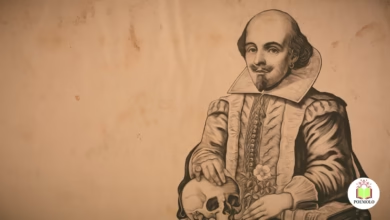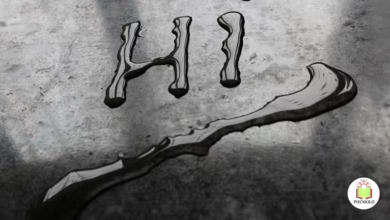The Middle Ages, a time filled with knights, castles, dragons, and Brave quests, is a period that sparks the imagination of many. When you weave this Captivating era together with poetry, you create a unique opportunity to captivate the minds of children while together educating them.
A children’s book of poems about the middle Ages can help introduce young readers to this important historical era in a way that is both engaging and educational.
In this article, I’ll explore the reasons why a book of poems about the Middle Ages is such a compelling read for children, how poetry brings this era to life, and what themes should be covered to make the book both entertaining and educational.
Why the middle Ages? A Time of Heroes, Legends, and Adventure

The Middle Ages, spanning from the 5th to the 15th century, was a time filled with fascinating stories and important events. Although the era can seem distant and even intimidating to modern audiences, it offers a wealth of themes that can be transformed into engaging content for children.
Here are a few reasons why the Middle Ages are a fantastic topic for children’s literature:
- Historical Adventure: The Middle Ages are known for stories filled with knights, battles, and epic quests. These thrilling adventures resonate with children who are naturally drawn to exciting narratives of bravery and heroism. Whether it’s a knight’s journey to rescue a princess or a dragon’s defeat, these stories captivate young readers.
- Rich Myths and Legends: Myths, legends, and tales of magical creatures like dragons or unicorns were prevalent during this period. These fantastical elements provide endless possibilities for a child’s imagination, making it easier to create stories that blend history and fantasy.
- Larger-than-Life Characters: Figures such as King Arthur, Joan of Arc, and Robin Hood are iconic in Western history. Their stories often blend the real with the mythical, making them perfect subjects for engaging poems that both educate and entertain.
- Moral Lessons: The Middle Ages often featured moral lessons, such as the importance of courage, honor, and justice. These lessons can be conveyed through poetry, providing young readers with valuable life lessons in a fun and engaging way.
- Visual and Symbolic Appeal: The imagery of castles, knights in shining armor, royal courts, and medieval festivals is visually striking, making it ideal for accompanying illustrations in a children’s book. These images help children connect with the historical context while enjoying the poetic form.
The Brave Knight’s Quest
In a castle high on a hill,
Lived a knight with a heart so still.
He dreamed of quests, both bold and grand,
To rescue kings and take a stand.
With armor bright and sword in hand,
He set out to defend the land.
Across the fields and through the trees,
He rode with the wind, as swift as the breeze.
A dragon’s roar was heard one day,
It threatened the kingdom, causing dismay.
The knight rode fast, without a fear,
To save the realm and all held dear.
Through fire and smoke, he did not sway,
His courage grew stronger with each passing day.
He faced the beast with eyes so bright,
And stood his ground in the moon’s pale light.
The battle was fierce, but the knight was true,
He struck the dragon with a blow so new.
With a roar, the beast flew away,
And the knight had saved the day.
Back at the castle, they cheered in delight,
For the kingdom was safe, thanks to the knight.
His story will be told for years to come,
A tale of bravery, courage, and a heart so strong.
Here’s an analysis table that breaks down the key elements of the poem “The Brave Knight’s Quest,” helping to understand the themes, structure, and literary devices used:
| Element | Description |
| Title | The Brave Knight’s Quest |
| Theme | Bravery and Courage |
| Setting | A medieval castle and surrounding land, including fields and forests, giving a traditional Middle Ages feel. |
| Main Character | A knight who embarks on a quest to save the kingdom from a dangerous dragon, symbolizing courage and heroism. |
| Conflict | The knight must face and defeat a dragon that threatens the kingdom, representing the classic good vs. evil struggle. |
| Resolution | The knight defeats the dragon and saves the kingdom, returning home as a hero, emphasizing honor and victory. |
| Structure | The poem follows a narrative structure with a clear beginning (introduction of knight), middle (the quest), and end (victory). |
| Rhyme Scheme | The poem uses an ABAB rhyme scheme throughout, creating a rhythmic flow that is easy to read and remember. |
| Tone | The tone is heroic and adventurous, aimed at inspiring children with a sense of bravery and determination. |
| Literary Devices | Alliteration: “sword in hand,” “dragon’s roar,” etc. Imagery: “armor bright,” “moon’s pale light.” Personification: “His courage grew stronger.” |
| Moral/Message | The poem teaches the value of courage, bravery, and sacrifice, showing how these virtues lead to success and honor. |
| Audience | The poem is tailored for children (ages 6-12), as it uses simple language, a clear plot, and engaging imagery. |
| Purpose | To entertain while imparting moral lessons and fostering an appreciation for medieval legends, heroism, and positive character traits. |
The Role of Poetry in Children’s Books: Why It’s Perfect for the Middle Ages
Poetry can be a powerful tool for bringing the Middle Ages to life for children. The rhythmic flow of words, the playfulness of rhyme, and the evocative imagery make poetry a natural medium for conveying historical narratives in an exciting, memorable way.
Here’s why poetry works so well for this topic:
- Simplicity and Accessibility: Poetry often distills complex ideas into simple, accessible language. A child may not understand the intricacies of medieval feudal systems, but a poem can use imaginative language to convey the ideas of honor, duty, and bravery in a way that children can relate to.
- Memorable Rhythm and Rhyme: The rhythmic quality of poetry helps children remember historical facts, characters, and events. Rhymes also keep children engaged, as they can predict what comes next, making it easier for them to follow along and become emotionally invested in the story.
- Engaging Imagery: Poems often use vivid and evocative language, which is ideal for describing the magical landscapes, grand castles, and chivalrous knights of the Middle Ages. Imagery can transport children into the world of the poem, allowing them to picture the world of medieval Europe in their minds.
- Encouraging Creativity: A children’s poetry book can inspire creativity by encouraging children to imagine themselves in the Middle Ages, whether as a knight on a grand adventure, a princess in a high tower, or a dragon lurking in a cave. Poetry opens the door for children to explore these ideas in their own creative ways.
The Structure of a Children’s Book of Poems About the Middle Ages
When designing a children’s poetry book based on the Middle Ages, it’s essential to structure the book in a way that captivates young readers while also providing a thorough exploration of the period. Here’s how a book could be organized:
- Introduction to the Middle Ages: The book should start with a simple, easy-to-understand introduction to the Middle Ages. This could be done through a brief poem that gives children an overview of the period and sparks their interest in the stories to come.
- Short, Engaging Poems: Each poem should be brief and captivating, focusing on a specific theme or figure from the Middle Ages. These poems could explore topics like knights, castles, kings and queens, dragons, and mythical creatures. Keep the poems short and easy to read, allowing children to absorb each story without feeling overwhelmed.
- Illustrations to Enhance the Poems: A children’s book of poems should be paired with colorful illustrations that bring the medieval world to life. Images of knights in armor, medieval feasts, castles, and mythical creatures help children connect with the poems on a visual level.
- A Variety of Themes: To keep the book interesting, the poems should cover a range of themes that children will find exciting and educational. This could include the bravery of knights, the grandeur of royal courts, the mystery of dragons, and the chivalric code that guided knights’ behavior.
Key Themes for a Children’s Book of Poems About the Middle Ages

A children’s book of poems about the Middle Ages should delve into various themes that are exciting and enriching for young readers. Here are some key themes to explore:
1. Knights and Chivalry
The ideal knight was brave, loyal, and followed a strict code of honor known as chivalry. Poems about knights can tell stories of courageous battles, quests to save the kingdom, and the values of loyalty, honor, and bravery. By focusing on the noble aspects of knights, children can learn about important virtues in a fun, adventurous context.
- Example Poem Theme: A young knight sets off on a quest to rescue a captured princess or to recover a stolen treasure, learning about courage and the importance of helping others along the way.
2. Castles and Kings
The grandeur of castles and the authority of kings and queens offer fantastic material for poetry. Poems can explore the life of royalty, from grand feasts and majestic ballrooms to the challenges of ruling over a kingdom. These poems can show children what it was like to live in a castle and what responsibilities a monarch might have had.
- Example Poem Theme: A queen must make a difficult decision for her people, or a prince learns that ruling requires wisdom, kindness, and a strong sense of justice.
3. Dragons and Mythical Creatures
No book about the Middle Ages is complete without dragons! These mystical creatures played a significant role in medieval myths and legends, and poems about dragons can introduce children to the magic and mystery of the era. Dragons can be fierce enemies, wise teachers, or even mischievous companions.
- Example Poem Theme: A young hero sets out to defeat a dragon, only to discover that the creature is misunderstood and simply wants to protect its home.
4. Legends and Myths
The Middle Ages were filled with captivating legends—like the story of King Arthur and his knights of the Round Table or the tale of Robin Hood. These timeless stories of bravery, honor, and justice are perfect for children’s poetry.
- Example Poem Theme: A poem might tell the story of Robin Hood, who steals from the rich to give to the poor, teaching children about fairness and compassion.
5. Medieval Festivals and Feasts
The Middle Ages weren’t all about battles and dragons. There were also vibrant festivals, grand banquets, and joyous celebrations. Poems about these festive occasions can introduce children to medieval culture in a fun and lively way.
- Example Poem Theme: A poem about a grand medieval feast with dancing, music, and delicious food, where everyone in the kingdom comes together to celebrate.
How a Children’s Book of Poems Teaches History and Builds Empathy
A children’s book of poems about the Middle Ages not only teaches historical facts but also helps children understand the broader themes of bravery, kindness, and justice. By using poetic language to describe knights, kings, dragons, and other figures, children can begin to relate to people from a different time and place.
Here are some benefits of this approach:
- Educational Value: The book serves as a fun and engaging way for children to learn about the middle Ages. Through poetry, they can discover important historical figures, events, and concepts in a way that is memorable and enjoyable.
- Building Empathy: Reading about knights, queens, and ordinary people from the Middle Ages allows children to connect emotionally with these characters. They can better understand the challenges people faced and the values they held dear, such as honor, bravery, and compassion.
- Encouraging Creative Thinking: Poetry opens up the imagination. By writing their own poems or visualizing the world of the Middle Ages, children are encouraged to think creatively and explore their ideas in new ways.
Conclusion:
The Middle Ages, with its rich history, legends, and themes of honor and adventure, offers endless possibilities for children’s poetry. A children’s book of poems about the Middle Ages not only introduces young readers to a fascinating historical period, but also sparks their imagination, teaches important life lessons, and engages them with the rhythm and beauty of poetry.
By creating poems that focus on key aspects of medieval life—such as knights, dragons, castles, and legendary heroes—children can embark on their own adventures through the written word. And through these poems, they can learn about the values that shaped our world while being swept away into a magical realm of chivalry, heroism, and imagination.
FAQs
1. At what age should children read books of poems about the Middle Ages?
These books are perfect for children aged 6 to 12, as they blend historical facts with fantasy, making them engaging for younger audiences while offering deeper insights for older children.
2. How can poems about the Middle Ages help children learn history?
Poems present historical events and figures in an imaginative and accessible way, turning complex history into simple, engaging stories that children can easily understand and remember.
3. Are there any famous medieval figures featured in the poems?
Yes! Poems about historical figures like King Arthur, Joan of Arc, and Robin Hood allow children to learn about these important characters in a fun, poetic form.
4. Can I use this book to teach kids about poetry?
Absolutely! The rhythmic nature of poetry helps children develop language skills and an appreciation for rhyme, meter, and metaphor, making it a great resource for teaching poetry.
5. What is the primary educational takeaway from this book?
The book helps children learn about the Middle Ages while teaching them valuable life lessons about bravery, honor, kindness, and justice, all wrapped up in engaging and memorable poems.





